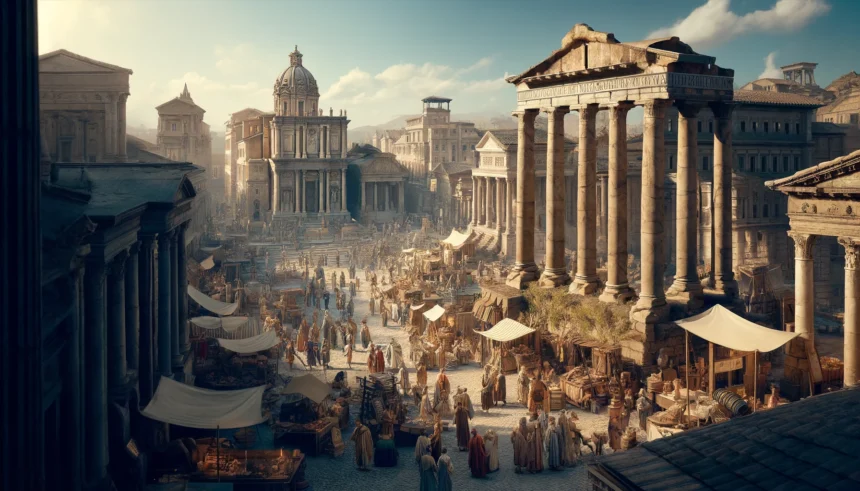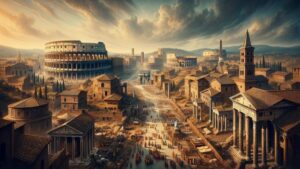Welcome to our journey into the world of antiquità, where we dive deep into the wonders of ancient treasures and artifacts. “Antiquità” refers to objects and relics from ancient times that hold historical and cultural significance. From majestic sculptures to delicate pottery, each antiquità tells a story of civilizations long past. Join us as we uncover the secrets and allure of these ancient wonders.
What is Antiquità
Antiquità means old things like coins, pottery, and statues that people made a long time ago. These things are not just old; they are special because they tell us about history. When we find antiquità, we can learn about how people lived, what they believed, and how they made things without modern tools. Some antiquità are famous for being very old and rare. People who study antiquità are called archaeologists, and they dig in the ground to find these treasures.
Antiquità are like time machines because they help us travel back to ancient times. They are found all around the world, buried in the earth or hidden in old buildings. Each piece of antiquità has a story to tell, and it’s exciting to uncover these stories and understand how they fit into the bigger picture of history.
The Fascinating World of Antiquità Collecting
Collecting antiquità is a hobby where people find and own pieces of history. Some people collect old coins from different countries, while others collect ancient jewelry or pottery. Each piece of antiquità is unique
and holds a special value because it connects us to the past. Collectors often search in antique shops, auctions, or even join archaeological digs to find new pieces for their collections.
People who collect antiquità are like detectives exploring the past. They study the details of each item to learn where it came from, who might have made it, and what it was used for. It’s a thrilling adventure to discover a rare piece of antiquità and imagine the lives of people who lived centuries ago.
Famous Antiquità Around the World
Some antiquità are famous because they are very old or have a special story. For example, the Egyptian pyramids and the Sphinx are famous antiquità from ancient Egypt. These massive stone structures were built thousands of years ago and still amaze people today with their size and beauty. Another famous antiquità is the Rosetta Stone, which helped people unlock the secrets of Egyptian hieroglyphs.
In Greece, the Parthenon is a famous temple built in ancient times. It’s a symbol of Greek architecture and history. The Terracotta Army in China is another famous antiquità. It’s a collection of thousands of life-sized clay soldiers buried with the first Emperor of China to protect him in the afterlife.
How Antiquità are Discovered and Preserved
Antiquità are often found buried in the ground or hidden in ancient ruins. Archaeologists carefully dig in layers of soil to uncover these treasures without damaging them. They use special tools like brushes and trowels to gently remove dirt and reveal the antiquità underneath. Sometimes, antiquità are discovered by accident when people are building or digging for other reasons.
Once antiquità are found, they are carefully cleaned and preserved to keep them safe. They might be kept in museums where people can see them and learn about history. Preservation experts use special techniques to protect antiquità from things like humidity, sunlight, and pests so they can last for future generations to enjoy.
Discovering Antiquities
Finding antiquities is like going on a treasure hunt. Archaeologists use special tools like brushes and shovels to carefully dig in the ground. They have to be very gentle so they don’t damage the ancient things they find. Sometimes, people find antiquities by accident when they’re building houses or digging in their backyard. It’s exciting to uncover something that hasn’t been seen for thousands of years!
Once archaeologists find antiquities, they clean them up and study them to learn more about the people who made them. They might find old pots that were used for cooking or ancient jewelry that people wore. Each antiquity gives clues about what life was like long ago and how civilizations developed over time.
Preserving Antiquities
Preserving antiquities means keeping them safe for future generations to learn from. Museums and experts use special techniques to protect these old treasures. They might store them in rooms with controlled temperatures and humidity to prevent them from getting damaged. Sometimes, antiquities are displayed in glass cases so people can see them up close without touching them.
Preserving antiquities also means studying them to understand how they were made and what they were used for. Experts might use scientific tools like microscopes or X-rays to examine tiny details. By taking care of antiquities, we can make sure that they continue to teach us about our history and the people who came before us.
The Importance of Studying Antiquities
Studying antiquities is like reading a book about the past. Each piece tells a story about ancient civilizations, their beliefs, and their daily lives. By studying these old treasures, we can learn how people lived, what they valued, and how they built their societies. It’s like stepping back in time and discovering the roots of our modern world. Archaeologists and historians work together to piece together these stories from antiquities found all around the globe.
Challenges in Preserving Antiquities
Preserving antiquities can be tricky because they are often fragile and can easily break or decay over time. Climate, pollution, and even human activities can harm these ancient treasures. Experts use special chemicals and techniques to clean and protect them. Sometimes, countries work together to protect antiquities by making laws to prevent them from being stolen or damaged. It’s important to preserve antiquities so that future generations can continue to learn from them.
Exploring Famous Antiquities
Famous antiquities capture people’s imaginations because of their age, beauty, or historical significance. For example, the Great Pyramid of Giza in Egypt is one of the oldest and largest structures ever built. It’s a marvel of ancient engineering and a symbol of Egypt’s rich history. The Terracotta Army in China is another famous antiquity. It’s a collection of thousands of life-sized clay soldiers buried with China’s first emperor to protect him in the afterlife. These famous antiquities continue to amaze and inspire people from all over the world.
Collecting Antiquities as a Hobby
Collecting antiquities is like being a treasure hunter. People who collect these old objects are called collectors. They search for antiquities in places like antique shops, auctions, or even on archaeological digs. Some collectors specialize in certain types of antiquities, like ancient coins or pottery. Each piece they find has a unique story to tell about the past. Collecting antiquities is not just about owning old things; it’s about preserving history and learning from the past.
Ethical Issues in Antiquity Trade
The trade of antiquities can sometimes be controversial. Some ancient artifacts are illegally taken from their original countries and sold on the black market. This can lead to the loss of valuable historical information and damage to archaeological sites. Countries and organizations work together to protect antiquities and prevent them from being stolen or smuggled. It’s important to buy antiquities from reputable sources and support efforts to preserve cultural heritage.
Antiquities in Art and Culture
Antiquities have influenced art and culture throughout history. Artists and writers have been inspired by ancient myths, legends, and artifacts. Ancient Greek and Roman sculptures, for example, have influenced many artists over the centuries. The stories and symbols found in antiquities continue to be a source of inspiration in literature, movies, and even fashion. Understanding antiquities helps us appreciate how ancient civilizations shaped our cultural heritage.
Conclusion
Exploring antiquities is like going on a magical journey through time. Each ancient artifact tells a story of the people who lived long ago and helps us understand how our world has changed over thousands of years. From the majestic pyramids of Egypt to the delicate pottery of ancient China, antiquities teach us about different cultures and civilizations that have shaped history.
Preserving antiquities is important so that future generations can continue to learn from these treasures. By studying and protecting these old objects, we can ensure that the stories of our ancestors are not lost. Whether you dream of becoming an archaeologist or simply enjoy learning about history, antiquities have a way of capturing our imagination and connecting us to the past in a meaningful way. So, let’s continue to cherish and explore these ancient wonders that remind us of our shared human heritage.








